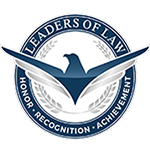Scientific testing of evidence can be crucial in a criminal case. However, improper use of testing and misapplication of these tests is the second most common factor contributing to wrongful convictions in California and across the nation, according to the Innocence Project. Approximately 362 cases in the U.S. have been overturned after DNA evidence proved that the person convicted in the crime was not actually guilty. In half of all cases that have been overturned due to reprocessing of DNA evidence, the misapplication of forensics was involved.
In some cases, tests were used in a case even though there has not been enough research to establish that these tests provide accurate or reliable results. For example, bite mark comparisons made on the skin cannot provide accurate information linking a person to a crime.
Still, other tests have not been scientifically validated to provide consistent results. There is little to no validation that shoeprint analysis is a valid form of testing. Unlike other tests, such as DNA analysis, which has been studied and scientifically shown to provide accurate results.
Even when proven scientific methods are validated, however, there is still the chance that the tests are performed incorrectly. Human error occurs, and mistakes are made. Forensic misconduct has also occurred where qualified analysts have fabricated the results. Professionals can also give misleading testimony, causing a judge or jurors to see results that are not actually there. They can understate or overstate the significance of the results, or say the evidence is conclusive when it is not.






